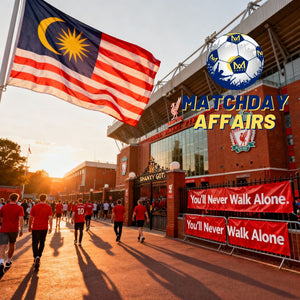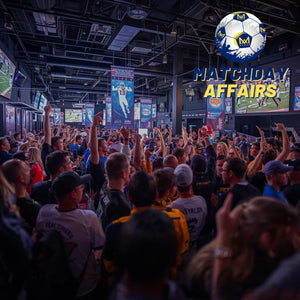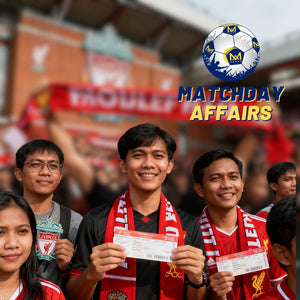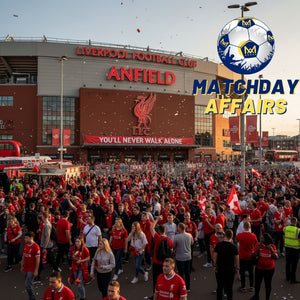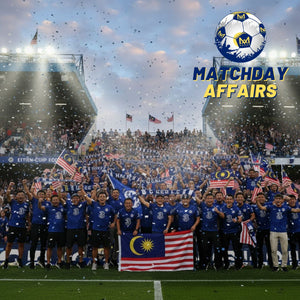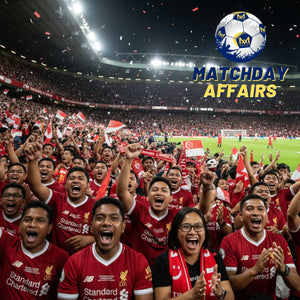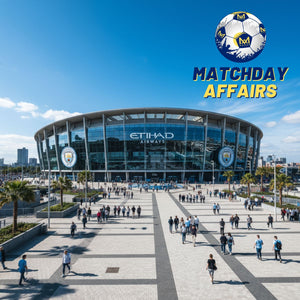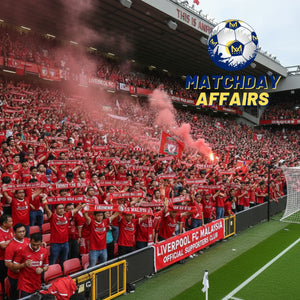
It's 3:15 AM on a Saturday morning in Singapore. While most of the island sleeps, something magical is happening. At a 24-hour kopitiam in Geylang, a group of red-shirted fans huddle around a flickering television screen, cups of kopi-o steaming in their hands. Across the Causeway in Kuala Lumpur, a mamak stall is absolutely packed. Every plastic chair is occupied, projector screens illuminate the night, and the air is thick with anticipation, cigarette smoke, and the aroma of nasi lemak.
This is BPL football in Southeast Asia. Not just a game. Not just entertainment. This is a way of life.
When Mohamed Salah cuts inside from the right wing, sixty Malaysian fans at the mamak hold their breath in unison. When Bruno Fernandes steps up to take a penalty at Old Trafford, a dozen Singaporean uncles at the kopitiam lean forward, hearts pounding. And when the ball hits the back of the net, the roar that erupts could wake half the neighborhood.
But here's what outsiders don't understand: we're not just watching football. We're living it. We've been living it for over three decades, building a love affair with English Premier League football that has transformed how an entire region experiences sports, community, and even identity itself.
This is the story of how BPL soccer became the heartbeat of Southeast Asia.
The 90s Revolution: When Satellite TV Brought English Football Home
Rewind to 1992. The English First Division had just rebranded itself as the Premier League, and something extraordinary was about to happen. While the footballing world focused on the restructuring's impact in England, nobody anticipated the tidal wave of passion it would unleash thousands of miles away in Southeast Asia.
Before satellite television, Southeast Asian football fans caught glimpses of European football through grainy highlight reels and newspaper reports. But when STAR Sports and ESPN began broadcasting live Premier League matches across Asia in the mid-1990s, everything changed overnight.
Suddenly, Malaysian teenagers could watch Eric Cantona's collar turned up at Old Trafford every Saturday night. Singaporean families gathered around their living rooms to witness Alan Shearer's thunderous strikes. Indonesian students stayed up through the night to see Dennis Bergkamp's magical footwork at Highbury. The English Premier became appointment viewing, an obsession that transcended age, race, and social class.
Manchester United's dominance during this era created the foundation for what would become unprecedented Asian fandom. Sir Alex Ferguson's treble-winning side of 1998-99 didn't just conquer Europe; they conquered Asian hearts. The sight of Ryan Giggs tearing through defenses, David Beckham bending free kicks, and Roy Keane dominating midfields turned casual viewers into lifelong devotees.
But it wasn't just United. Liverpool's European pedigree attracted massive followings across Malaysia and Singapore. Arsenal's "Invincibles" season captured imaginations throughout Indonesia. Chelsea's rise under Roman Abramovich created new generations of Blue supporters from Bangkok to Jakarta.
The timing was perfect. Southeast Asia's economies were growing, satellite dishes were becoming affordable, and young people were hungry for global entertainment. BPL football filled that hunger completely, offering drama, quality, and consistency that local leagues couldn't match at the time.
More Than Just a Game: The Ritual of Watching BPL Football
Ask any dedicated Southeast Asian football fan about their matchday ritual, and you'll hear stories that sound almost religious in their devotion.
In Malaysia, the mamak stall culture has become inseparable from BPL football. These open-air Indian Muslim eateries, operating 24/7, have evolved into unofficial football stadiums. When Liverpool faces Manchester United, popular mamaks in Kuala Lumpur can accommodate hundreds of fans. Projector screens replace stadium jumbotrons. Plastic chairs substitute for proper seating. Roti canai and teh tarik serve as matchday sustenance.
The atmosphere during major fixtures rivals actual stadiums. Fans arrive hours early to secure good viewing spots. They wear their team jerseys with pride, transforming mamak stalls into seas of red, blue, or white. When their team scores, the cheers echo through entire neighborhoods. When they concede, the collective groans are equally loud.
"The mamak is where Malaysian football culture comes alive," explains a lifelong Manchester United supporter from Petaling Jaya. "You're surrounded by people who understand why you're willing to lose sleep for 90 minutes of football. The energy, the banter, the shared experience – you can't get that watching alone at home."
Singapore's kopitiam culture offers a similar communal experience. While perhaps slightly more subdued than Malaysia's mamak scene, Singapore's traditional coffee shops have embraced Premier League football as prime-time entertainment. From Toa Payoh to Tampines, kopitiams with television screens become impromptu gathering spots for fans during important matches.
But Singapore's football viewing culture extends beyond kopitiams. The city-state boasts numerous sports bars catering specifically to Premier League fans. Molly Malone's Irish Pub, BQ Bar at Boat Quay, and Harry's outlets across the island have become legendary viewing venues. These establishments screen every single matchday fixture, creating professional atmospheres that transport fans closer to the actual English experience.
The dedication runs deeper than casual viewing. Southeast Asian fans wake up at ungodly hours because Premier League matches kick off during our night. A 3 PM kickoff in London means a 10 PM start in Singapore and Malaysia – manageable for evening fixtures. But those Saturday 12:30 PM London kickoffs? That's 7:30 PM for us. And the early Sunday matches? We're talking midnight or later.
Champions League fixtures during midweek often mean choosing between sleep and football. Thousands choose football. They show up to work the next morning exhausted but satisfied, discussing every tactical nuance with equally tired colleagues who made the same sacrifice.
This isn't passive entertainment. Southeast Asian fans learn the chants, study the tactics, and analyze transfers with the fervor of professional pundits. We don't just support teams; we live and breathe them.
The Beautiful Obsession: Why SEA Fans Know Every Chant
What separates Southeast Asian BPL football fans from casual international viewers is the depth of knowledge and passion. We're not bandwagon jumpers or fair-weather supporters. We're in it for life, through relegation battles and title triumphs alike.
The statistics tell an incredible story. During recent seasons, Premier League's total cumulative TV audience in Southeast Asia reached hundreds of millions of viewers. Countries like Singapore, Malaysia, Indonesia, Thailand, and Vietnam broadcast all 380 Premier League games every season. That's more comprehensive coverage than many leagues provide in their home countries.
Consider this remarkable fact: watching a Premier League match live is listed as a dream activity for one in four potential visitors across international markets. For Southeast Asian fans specifically, that percentage climbs even higher. Making the pilgrimage to Anfield, Old Trafford, or the Emirates isn't just a vacation idea – it's a bucket list essential.
The depth of fandom manifests in fascinating ways. Malaysian supporters' clubs for major Premier League teams operate like official embassies. The KL Kopites, Liverpool's official Malaysian supporters' club, organized massive viewing events that drew tens of thousands of fans when the team visited Kuala Lumpur. Singapore's Manchester United supporters similarly mobilize for every major occasion.
Indonesian Liverpool fans create atmospheres at viewing parties that rival Anfield itself. Thai football culture has embraced Premier League to such an extent that Bangkok's sports bars treat matchdays like national holidays. Vietnamese fans demonstrate encyclopedic knowledge of Premier League history despite the league only gaining massive traction there in recent years.
The social media age has amplified this obsession exponentially. Southeast Asian fans don't just watch matches; they live-tweet every moment, create memes within minutes of key events, and engage in passionate debates across Facebook groups with tens of thousands of members. Instagram stories from matchday meetups in Jakarta, Kuala Lumpur, and Singapore showcase the vibrant community that BPL soccer has created.
Youth engagement remains remarkably strong despite the rise of newer leagues. While some younger fans gravitate toward Manchester City or other recently successful teams, the overall passion for Premier League football across Southeast Asia continues growing. Local content creators dedicate entire YouTube channels to Premier League analysis from Southeast Asian perspectives.
From Screen to Stadium: Making the Pilgrimage
For decades, Southeast Asian fans experienced Premier League football exclusively through screens. But as regional economies grew and travel became more accessible, something extraordinary started happening: fans began making pilgrimages to England to witness their beloved teams in person.
The journey from Southeast Asia to England represents more than just tourism. For devoted fans who've spent years waking up at 3 AM to watch matches, stepping into Anfield or Old Trafford is a spiritual experience.
Research revealed that football matches attracted hundreds of thousands of international visitors annually to the UK, making it the number one sporting draw for tourism. Southeast Asian fans represented a significant portion of that number, with travel patterns showing concentrated visits during key fixture periods.
The logistics of planning a football trip to England from Singapore or Malaysia have evolved significantly. Specialized football tourism agencies emerged to serve this passionate demographic. Companies built entire business models around Southeast Asian fans' Premier League dreams, organizing comprehensive tour packages that include match tickets, accommodation, stadium tours, and cultural experiences.
For many fans, particularly those with disposable income, this represents a once-in-a-lifetime investment in their lifelong passion.
The experience of attending a live Premier League match transforms theoretical fandom into visceral reality. Singaporean fans describe the overwhelming emotion of hearing "You'll Never Walk Alone" sung by 54,000 Kopites at Anfield. Malaysian United supporters recount the goosebumps when Old Trafford's Stretford End erupts in full voice. Indonesian Arsenal fans describe walking into the Emirates as stepping into a dream they'd visualized for twenty years.
Pre-match rituals become essential parts of the pilgrimage. Southeast Asian fans learn to participate authentically in English football culture: arriving at supporter pubs three hours before kickoff, engaging in friendly banter with local fans, learning to appreciate traditional British matchday food, and understanding unwritten stadium etiquette.
The reception from English fans adds unexpected warmth to these journeys. British supporters generally respect and welcome Southeast Asian fans who demonstrate genuine knowledge and passion. Stories abound of Malaysian visitors being adopted by local supporter groups for matchdays, Singaporean fans receiving free pints from impressed English mates after demonstrating chant knowledge, and Indonesian supporters earning respect by traveling halfway around the world to support their teams.
For those planning their own pilgrimage, services handle the complex logistics of tickets, visas, flights, and accommodations, allowing fans to focus purely on the experience itself. Liverpool supporters can explore dedicated Anfield experience packages, while Manchester United fans from Malaysia have shared incredible stories about their Old Trafford pilgrimages.
Manchester United, Liverpool & The Big Six in SEA
The distribution of club loyalties across Southeast Asia tells fascinating stories about how Premier League fandom developed in the region.
Manchester United's dominance in Malaysia is legendary. Walk through Kuala Lumpur on a United matchday, and entire shopping malls fill with fans wearing red jerseys. The club's tremendous success during the 1990s and 2000s, coinciding perfectly with satellite television's arrival, created generations of devoted Malaysian Reds.
United's estimated hundreds of millions of global followers included massive proportions from the Asia-Pacific region, with Malaysia representing one of their strongest international markets. The Manchester United Supporters Club Malaysia operates as one of the most organized fan groups in Southeast Asia.
However, United's recent struggles have created interesting dynamics. Younger Malaysian fans increasingly question supporting a team that "consistently loses," while older supporters remain fiercely loyal to the club that defined their youth. This generational divide reflects broader patterns in Southeast Asian football fandom.
Liverpool commands enormous followings across Singapore, Malaysia, and Indonesia. The club's historic success, working-class identity, and recent resurgence have amplified their Southeast Asian presence significantly. Research suggests Liverpool maintains one of the largest followings in Thailand, Malaysia, Singapore, and Indonesia among all European clubs.
The KL Kopites represent one of Southeast Asia's most active supporter organizations. When Liverpool visited Kuala Lumpur, over 80,000 fans packed the stadium for a friendly match – attendance that exceeded many Premier League fixtures in England itself. Singapore's Liverpool supporters organize viewing parties that regularly attract hundreds of fans, and for those dreaming of experiencing the real thing, Liverpool tour packages from Singapore offer comprehensive Anfield experiences.
Arsenal maintains strong presences across Singapore. The Gunners' stylish football during the Arsène Wenger era, combined with significant sponsorship relationships in Asia, built substantial fanbases throughout the region. Singapore particularly embraced Arsenal, with the club ranking among the most searched Premier League teams in the city-state.
Manchester City's recent dominance has attracted younger Southeast Asian fans. Parents across Malaysia report their children choosing City jerseys over traditional United gear. Pep Guardiola's attractive football and sustained success make City increasingly appealing to fans who began following Premier League in the past decade.
Chelsea, Tottenham, and other Big Six clubs each maintain dedicated Southeast Asian followings, though generally smaller than United, Liverpool, or Arsenal. The diversity of club loyalties creates the vibrant ecosystem that makes Southeast Asian football culture so dynamic.
For fans looking to experience their clubs firsthand, specialized stadium tours guide Malaysian fans through everything they need to know, while Singapore fans can secure guaranteed Manchester United tickets through verified channels.
The Future: Next Generation of BPL Football Fans
Southeast Asian BPL football culture stands at an interesting crossroads. The passion that defined previous generations continues burning brightly, but new dynamics are reshaping how young people engage with the sport.
Streaming platforms have revolutionized access. Singapore's Mediacorp now offers Premier League through its mewatch platform via licensing deals. Malaysia's Astro provides comprehensive coverage with flexible packages. This digital shift allows fans to watch on mobile devices, tablets, and computers rather than being tied to television sets or public viewing venues.
Recent data shows that digital viewership has dramatically increased, with online platforms averaging tens of thousands of viewers per match. This reflects broader generational shifts in sports consumption.
Youth engagement with local football presents interesting contrasts. While young Southeast Asians remain passionate about English Premier football, they often show less interest in domestic leagues. This pattern repeats across Southeast Asia, where international league viewership dwarfs local football interest.
Social media has transformed fandom into participatory culture. Young fans don't just consume football content; they create it. TikTok videos dissecting tactical decisions, Instagram reels celebrating goals, and Twitter threads analyzing transfer news have become standard expressions of Southeast Asian football passion. Content creators dedicate channels to providing Premier League coverage specifically tailored to regional audiences.
The question of sustainable fandom looms large. Will young Southeast Asians maintain the sacrificial dedication that characterized their parents' generation? Will they wake up at 3 AM for matches, or will they simply watch highlights the next morning? Will they develop the deep emotional connections that made older fans cry when their teams won trophies?
Early indicators suggest the passion remains strong, though it manifests differently. Young fans may not gather at mamak stalls as frequently as their parents did, but they create vibrant online communities that transcend physical geography. They may not memorize every historical statistic, but they engage with modern analytics and tactical analysis in sophisticated ways.
Football tourism among Southeast Asian youth is rising. Despite younger ages and generally lower incomes, Gen Z fans prioritize saving for Premier League stadium pilgrimages. The dream of attending matches in person continues inspiring new generations, ensuring that demand for Premier League travel packages from Singapore remains strong.
The Premier League itself has recognized Southeast Asia's importance, organizing pre-season tours throughout the region and creating targeted content for Asian audiences. As long as the league maintains its quality and accessibility, Southeast Asian passion shows no signs of diminishing.
The Unbreakable Bond
It's 5:30 AM now. The match has ended. At the mamak stall in Kuala Lumpur, fans begin trickling away, some jubilant, others dejected, all exhausted but satisfied. At the Singapore kopitiam, uncles settle their bills, discussing the referee's decisions and debating tactical substitutions.
They'll be back next weekend. And the weekend after that. Because BPL football isn't just entertainment for Southeast Asians – it's part of our identity, our community, and our culture.
From the moment satellite dishes brought English football into our homes in the 1990s, through decades of 3 AM wake-ups and passionate mamak debates, to the modern era of streaming platforms and Instagram highlights, our love affair with the Premier League has only deepened.
We've moved beyond just watching. We've become participants in a global football family, recognized and respected by English fans who appreciate our dedication. We've created our own unique football culture that blends British traditions with Southeast Asian hospitality and passion.
And for those ready to take the final step – to transform from screen supporters to stadium pilgrims – the journey awaits. Whether you're planning your first trip to witness Liverpool defend their title, finally securing those Old Trafford tickets you've dreamed about, or simply want to experience the atmosphere at top Premier League stadiums, the magic of BPL soccer is waiting for you in England.
Because some love affairs transcend distance, time zones, and even sleep schedules. This is ours. This is Southeast Asian English Premier League passion. And it's never going away.
Our Matchday Experiences
Immerse yourself in the passion and atmosphere of England's greatest football stadiums
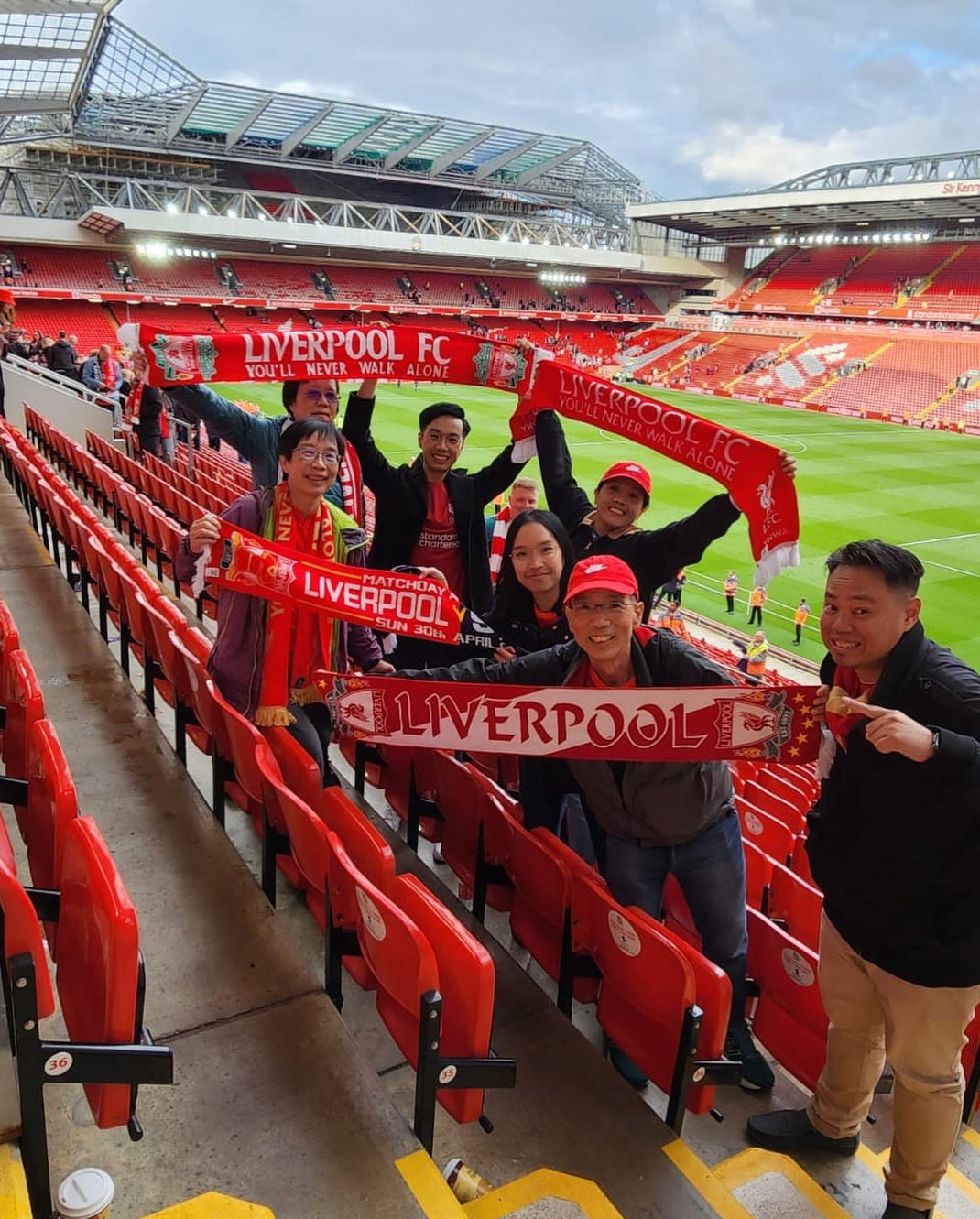
Anfield Expedition
Experience Anfield like never before: match tickets, tours, and the electric atmosphere of Liverpool FC
Explore Experience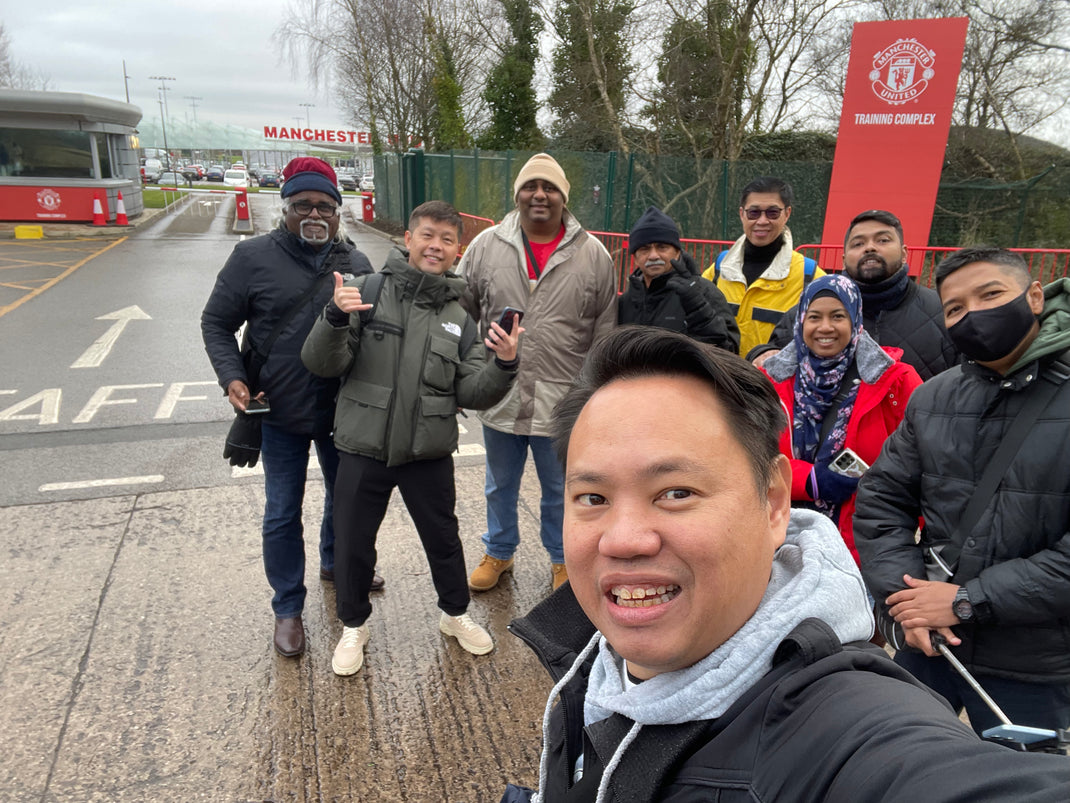
Old Trafford Experience
Pair text with an image to focus on your chosen product, collection, or blog post. Add details on availability, style, or even provide a review.
Explore Experience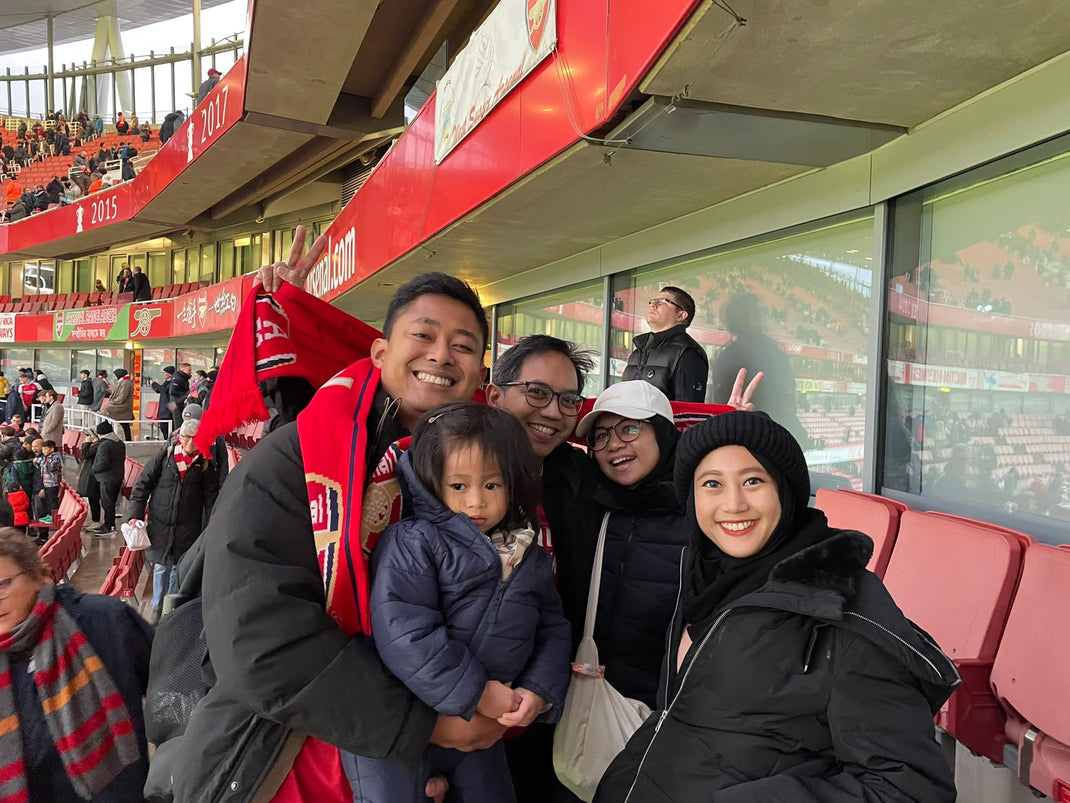
Emirates Experience
Discover the Emirates: Arsenal matches, VIP tours, and a deep dive into Gunners' football culture
Explore Experience
Stamford Bridge Experience
Explore Stamford Bridge: Get Chelsea tickets, behind-the-scenes tours, and feel the Blues' passion
Explore Experience






































